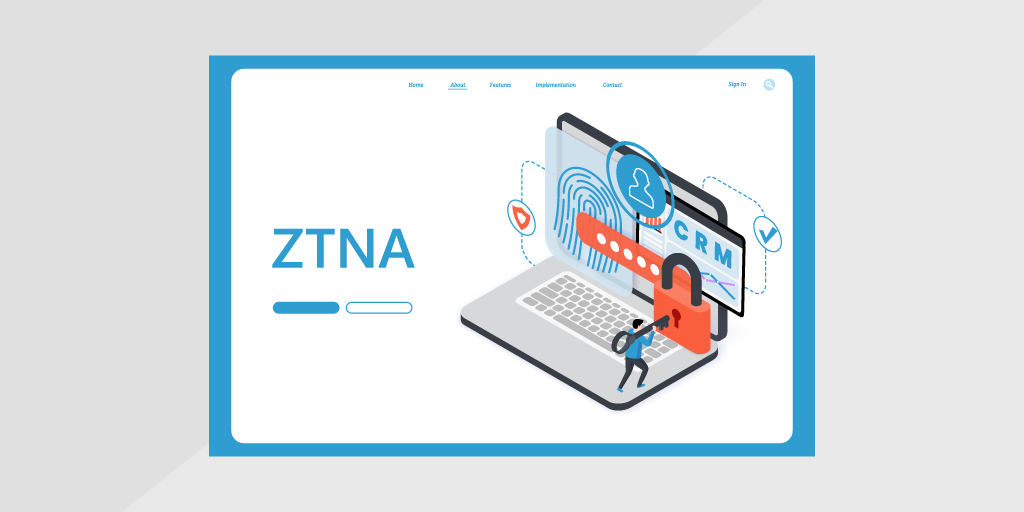
“Trust no one.” This quote calls to mind multiple action thriller blockbusters that featured star-powered casts and a renegade fugitive running for his life. But in the world of IT, it characterizes a new cybersecurity strategy that’s gaining a lot of traction among enterprises: Zero Trust Network Access (ZTNA).
In their mission to combat the growing threat of cybercrime, Cybersecurity solution providers are helping customers implement the zero-trust model, to provide stronger cyber threat defense and a better end-user customer experience. In this post, we’ll explain the concept of ZTNA, how it works, and why device recognition technology is the basis of a zero-trust architecture.
Never trust, always verify
A Zero Trust architecture guards against unauthorized access by enforcing access policies based on the context of the device or user attempting access. The approach is a paradigm shift from older perimeter-based network architectures that rely on approved IP addresses, ports, and protocols to establish access controls and validate trusted entities, where anyone connecting over a VPN is considered trusted. The problem with these legacy approaches is that VPNs enable remote and unprotected user devices to connect to the network, and a bad actor who gets their hands on leaked credentials can easily break in and launch an attack via spyware or ransomware.
By contrast, Zero Trust looks at the user’s role and location, the device being used, and the information they’re requesting and assumes the user is guilty until proven innocent.
Each user, machine, and application has its perimeter security, and access is controlled based on users having “just enough” and “just-in-time” access according to their identity, role, and company policy. Zero Trust is applied not only to users but also to devices and applications—whether on-premises, remote, or in the cloud—and assumes no device or person can be trusted. It doesn’t matter if someone has accessed the network previously—their identity is considered potentially malicious until verification is complete.
There are three key technologies in place in a Zero Trust architecture:
- Least privileged access: Users have the least access needed to do their jobs.
- Multi-factor authentication: Devices and users are granted access when two or more pieces of evidence are provided to verify their identity.
- Microsegmentation: Various zones in the data center or a cloud environment can be segmented to isolate workloads and limit traffic.
Working together, these technologies reduce the risk of unauthorized access, mitigating the increasing risk of cybercrime.
The First Step to Zero Trust: Identifying Assets
Device identification and recognition create a solid foundation for implementing zero-trust network access. The Zero-Trust model requires the authentication and authorization of every device and person before any access to data is granted. To achieve this, you must identify and recognize the devices used to connect the network.
Zero-trust policies constantly look for signals of a potential threat – such as a user attempting to access the network using an unknown device or logging on from an unknown location. If the device or the user exhibits unfamiliar behavior, access is denied. It’s therefore critical to understand the organization’s “protect surface” – the users, devices, data, and applications comprising the corporate infrastructure and where all those resources are located. Having a complete inventory of all the network devices enables IT teams to map out where zero-trust security policies should be enforced.
Differentiate Your Products with Device Recognition Technology
Lansweeper Embedded Technologies delivers Device Recognition and Identification capabilities to provide complete visibility across the growing and distributed technology infrastructure. By embedding our Device Recognition Technology into your cybersecurity solution, you can offer your clients an essential service to help them build their Zero-Trust infrastructure while differentiating your cybersecurity products from those of your competitors.
Lansweeper quickly and automatically scans and identifies all devices on a network. It analyzes common protocols to identify billions of wireless and wired devices, revealing their make, model, category, and OS with limited input data. Lansweeper generates a unique fingerprint for each device, then encrypts and stores it in our vast and growing database. Cybersecurity providers can quickly and easily integrate Lansweeper’s Device Recognition Technology into their products using our SDKs and Cloud API. We also offer offline databases and on-premise solutions to meet special requirements, for example, in government or other sensitive environments.
With the ability to identify connected devices in real time, implementing zero-trust network access policies to protect your organization from malware, ransomware, and other cybercrime is a goal within reach.
Innovate, Scale, and Get to Market Faster
Accelerate your go-to-market by leveraging our embedded technologies.
OEM Products

